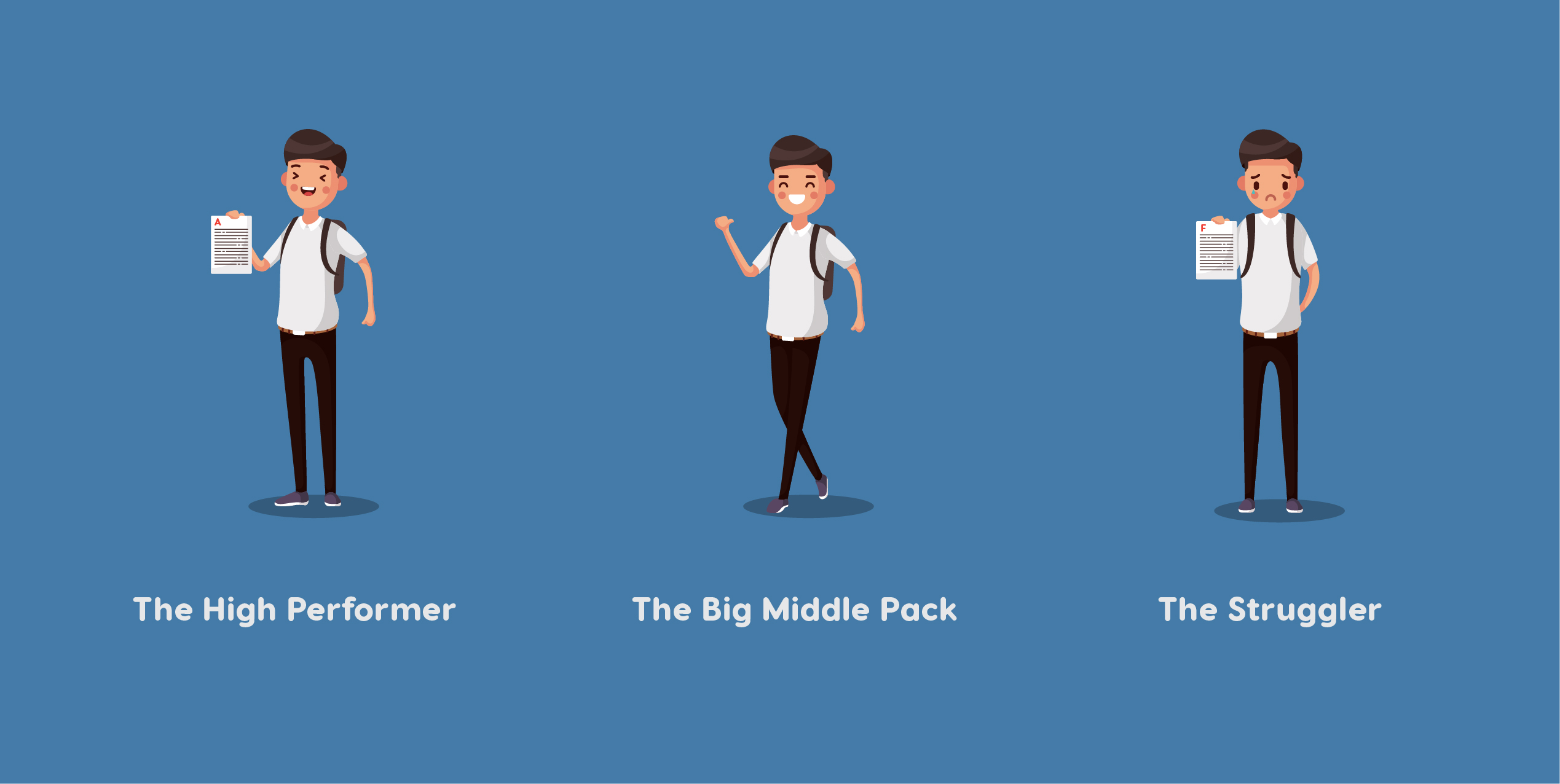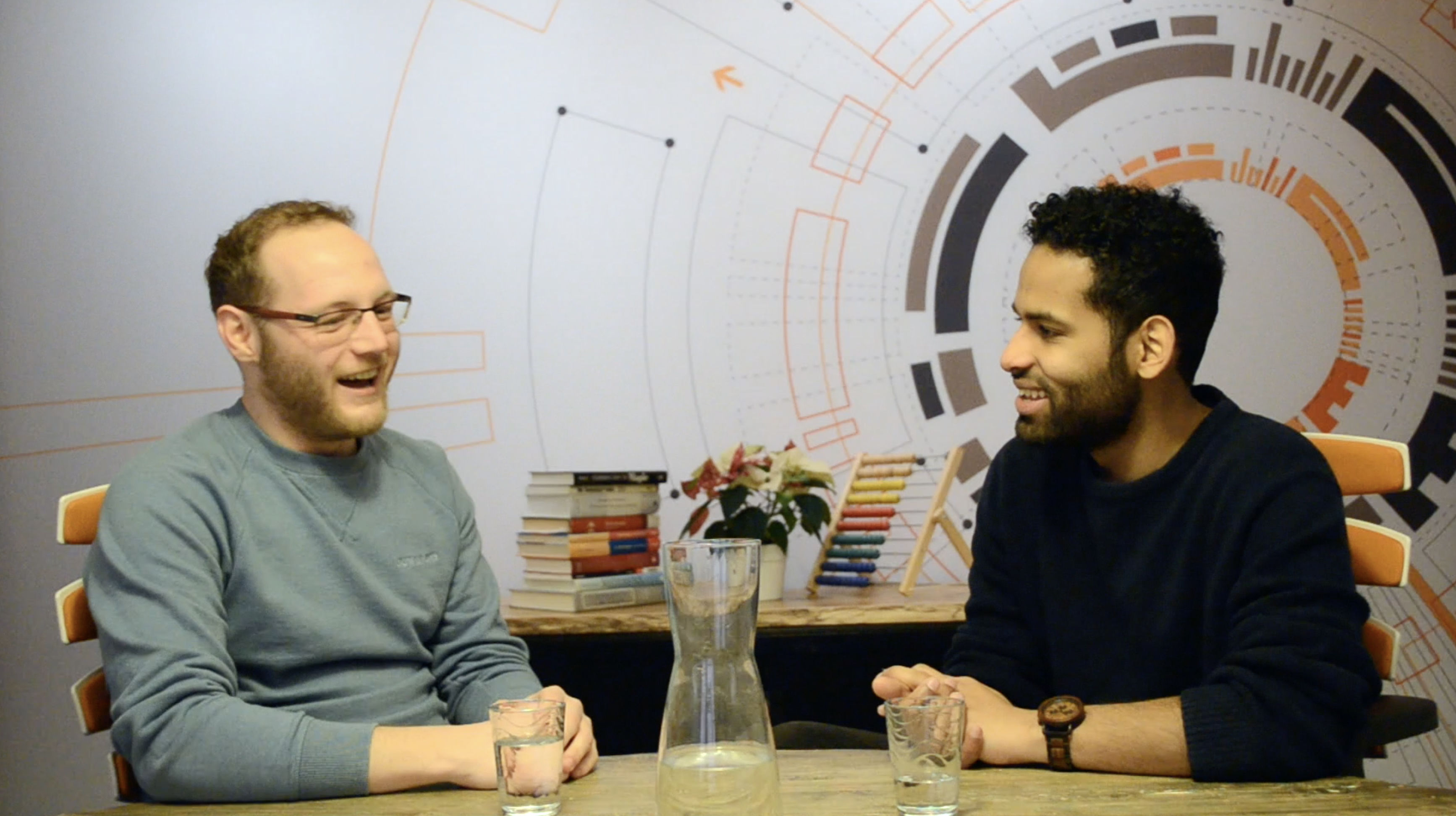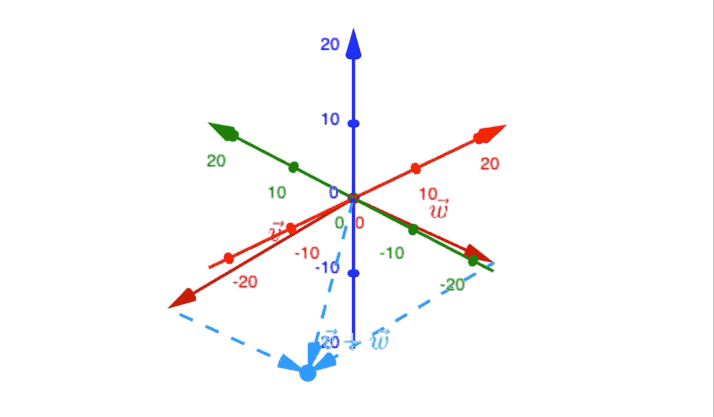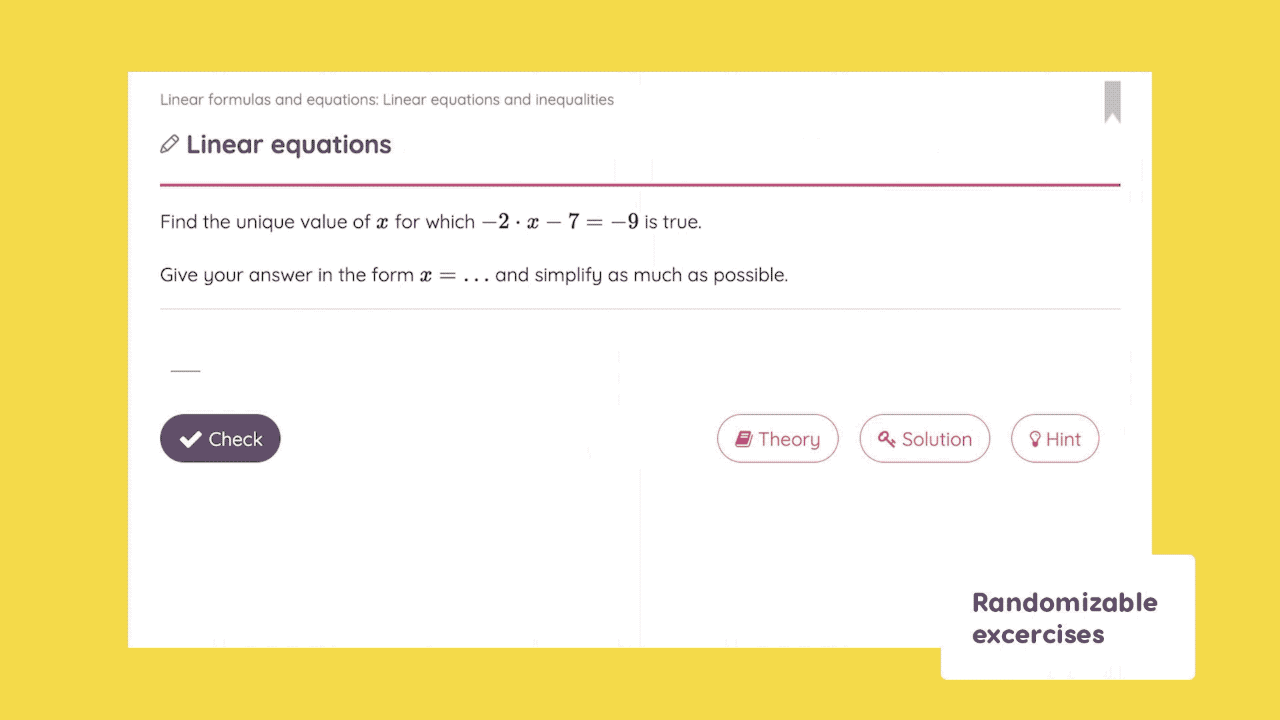Image by Kiana Bosman
It’s very much the case that these days (actually for quite a while) terms such as education technology and e-learning often take the form of empty buzzwords. And even when it’s not empty, it often falls into the pit of ‘innovation for the sake of innovation’ or ‘of course we have to make everything online!”.
In the following excerpt from our interview with Lars van Boeijen (Author at SOWISO & Lecture at Erasmus University College), we dive into the utopia of one-on-one mathematics instruction and how technology can get us closer to achieving it.
To start with, Lars paints for us a picture of what a typical mathematics classroom of first year students looks like:


“You always have different types of students and different types of students have different needs. In every class, you have maybe a group of 10-15% students who are really high performers. These are are just kids who did well in high school and who will undoubtedly do well going forward in their future studies”
These are students who need a minimal amount of support and in Lars’ experience just prefer learning independently and quickly moving through topics. Sometimes these students even act as frustration points for lower performing students as they act as a constant reminder of the existing skill gap within a classroom. But apart from that, if you consider what are the actual challenges to teaching mathematics, these top group of performers are not something that worries you.

“Then there is the big middle pack - this is the overwhelming majority of your class. The biggest challenge for these students is to actually get them to put in the work, so if they have gaps in their foundation, to get them to fix those. Also during the course, to have them practice consistently and at all costs make sure they don’t get the idea ‘I’m just going to cram two weeks before my exam’.”
When it comes to math and when it comes to mastering a skill, such a thought process is very counterproductive. If you want to master a skill by week eight, you really need to start practicing in week one. Apart from getting the students to consistently practice, the other challenge here is to provide them with enough personalized feedback and instruction that informs their practice and their learning journey.

“And then there is the last group of students-these students are not only struggling with the material but usually also have a strong emotional reaction to math. These are students who get really stressed out and who have experienced math anxiety throughout highschool. Their mind just goes blank when they start noticing that they are falling behind. These are students that generally require your most attention and time. Besides the technical instruction, these students also benefit from emotional support and really just sitting down with them and having a conversation about what is scaring them and seeing what you can do as a teacher to help them to pass the course”
When it comes to the teacher in charge of such a classroom or any teacher for that matter, time is the most precious resource. Generally speaking, a university teacher has very little time to spend with their students due to limited contact hours and other administrative tasks that come along with teaching. When asked about what is the best way to deal with such a group of students, Lars says:
“There really is no replacement for one-to-one instruction when it comes to math. If you could give every student a private tutor then there really is no reason why a student shouldn’t be able to pass the course, unless they are really behind from past courses.”
The reason why Lars says private tutor here is because a private tutor will have enough time to diagnose where exactly a student is on his/her learning journey, prescribe a solution to fill in their specific gaps of knowledge and then assist the respective student in doing so.
“In a university setting, because of the sheer number of students , you are sort of forced to assume that they have mastered all the topics preceding a specific course. Simply because with traditional learning resources, if you have to go in and profile each student’s strengths and weaknesses, then half of the course will be over and there is only four weeks left to cover the actual course material”
This is essentially the economical imbalance that is prevalent in most university first year mathematics courses: the students’ demand for personalized attention vs the time that a teacher has to give to these students. And this is where, according to Lars, digital technology can help restore that imbalance.
“In an ideal world, we would either double the amount of teachers or half the amount of students just to make sure that each student gets more time with a teacher. But this is hard to do since the number of incoming students are growing every year while the number of teachers is remaining very stable. So we can’t really tweak the numbers in order to restore this balance. So we need to figure out some new ways to do that”

Picture taken during the interview Watch the full video here
According to Lars, this is where technology comes in and it can help in two ways:
“First question you have to ask yourself is whether there is any way that digital technology can help save the teacher time. Are there some tasks that we can automate so that the teacher has more time to spend on their students and personalized instruction. On the student side, the question we have to ask is what can we do with technology in order to reduce the dependency of the student on the teacher. In other words, is there any way that we can set up the learning material so that students are able to work through the material on their own without intervention from the teacher.”
To put it in simple economic terms: increase the supply of time on the teacher side and decrease the demand of ‘teacher help’ on the student side.
As mentioned before, as a teacher, one of the main struggles is that you have a larger group of students where everyone has their unique profile of strengths and weaknesses. Ideally as a teacher, you would like to know beforehand, what those strengths and weaknesses are.
“While there is no replacement for one-to-one instruction, if you know that a larger number of students are struggling with a particular topic then you can adjust your lesson plans accordingly and address it in a lecture or have your teaching assistants watch out for particular things.”
One way of doing this is by running an initial diagnosis on what every student’s strengths and weaknesses are. This can be done either with the help of a diagnostic test or by keeping track of their week by week progress. Doing this the traditional way through creating your own test and then grading it and then trying to discern patterns from the scores can be very time consuming. By digitising this whole process, you can set up things like automatic grading of homework and assignments and let the computer do heavy lifting.
“Just by automating things like checking and grading, things like diagnosing a student’s learning profile becomes much easier”
When it comes to monitoring student progress, the traditional course is set up in such a way that the one moment that you are really testing your students’ capabilities and getting a clear overview of your student’s performance is at the end of the course.

Screenshot of learning analytics
“After the final exam is taken and graded, then you can see these are topics that the students are struggling with. But obviously, by then, it’s too late to intervene. So ideally you want to see week by week what are the topics that the students are struggling with, which students are struggling, and figure out whether someone is a high,middle or low performer. But as a teacher you don’t have enough time to give and grade the weekly homework assignments that are needed to get this overview”
Using just a paper and textbook, it’s not feasible to assign weekly homework to a larger number of students and then make sure that they do it. WIth a digital tool, apart from having the homework automatically graded, as a teacher you can also get access to comprehensive reports of your students engagement and performance with the homework material. By having the digital tool do the number crunching and later display it into graphical data, it becomes very easy for a teacher to spot which student is struggling with what, even when dealing with large cohorts.
“On the student side, maybe the best way to present this is to directly compare it to your traditional textbook and asking ourselves what changes when we move from a paper textbook to a digital learning environment”
It’s important to note here that Lars is not talking about just a pdf. A pdf is just text on screen as opposed to text on paper, so in that sense with a pdf, didactically nothing changes.
“A textbook generally does two things. First, it explains certain topics and it presents the skills and rules that students need to learn and it provides examples to do so. The other thing that textbooks do is that they provide the exercises and assignments that students can use to practice and test their knowledge. All this with the goal to make sure that the students can master the topics they are supposed to learn”

When it comes to theory, by switching from a paper-textbook to a digital medium, you get access to new ways to present information. Where paper is limited to text and images, a computer can also make use of video, audio and animation. By using these new mediums, all of sudden you are making a topic more accessible for students who might have different preferences when it comes to consuming knowledge.
“Not every type of information is processed equally well over a particular medium. Some things are easily presented written down whereas others are better presented visually. For example, I could write out that if I increase the $x$ value here, then $y$ is going to increase exponentially. Or I could create or use a small animation where I give the students a slider and let the students change values themselves within a function and observe how that changes its graphical representation”
When it comes to videos, even things like a recorded lecture has quite a number of benefits over just attending the lecture. Once a lecture is recorded, the students are able to pause it or rewind it if something is unclear. Moreover, students are not preoccupied with taking notes, which lets them fully engage with the information being presented.
“When you are giving a live lecture, students are always busy just frantically taking notes. It’s very hard to keep track of a calculation or get a high-level understanding of what you are doing if all you are doing is copying. It’s very hard to think and write at the same time”
Something else that is useful with videos is what you can do with it when it comes to presenting worked out solutions. Textbooks are only capable of giving students worked out solutions as a whole and this can be quite overwhelming. Especially when problems get more complex, they might involve anywhere between 10-to-20 substeps.
“With a video, you can tape yourself working through an exercise and there is a much more natural flow and tempo in the way the information is presented. It’s also much easier to follow”
When it comes to exercises, as a teacher, you get access to a bigger suite of tools when creating digital exercises. So instead of having set values or variables in exercises, teachers can use a computer algorithm to randomly generate a particular type of exercise.

Animation of randomizable variables in exercise
“This creates a lot more practice material for students. It allows students to keep practicing a particular type of exercise till they feel like they mastered it. One of the frustrating things that they encounter is that they need four or five attempts at a problem in order to master it. But by the time that you are just getting comfortable with a topic, the practice material has run out. By using the power of computers to randomly generate exercises, the amount of practice material just sky-rockets”
When it comes to worked-out solutions, just like a digital tool can be written with algorithms to generate randomized exercises, they can also be programmed to solve these randomized exercises. This means that students will always have access to a worked-out solution for an exercise, if need be. While it might take some time to set up at the onset, once it’s set up, it’s very easy to use the blue-print of an exercise and to create endless practice exercises with it along with their respective worked out solutions.
“One of the techniques you use as a tutor a lot is something called guided practice. So basically you sit down next to a student and I will have you make a problem and as you go along, I will steer you in the right direction. So point out small errors or say things like you might want to look again at step 3.”
This is not something that can be perfectly replicated with a computer or at least not yet. But it can imitate it to a certain degree. The relation between a book and a student in one-way, where a student gets information from the book but the book cannot process anything that the student writes down.

Animation of personalised feedback
“With a computer, we can actually analyze the answer that the student writes down. So instead of just saying an answer is right or wrong, a computer can backtrack the steps a student took to get to his/her answer and can give the student targetted feedback while they are practicing without a teacher having to sit down next to them and spend time doing so.”
This is another way that a digital tool can lower the demand for teacher interventions from students and reduce the load of the teacher.
At the end of the day, according to Lars, digital technology is not something that will end up making teachers redundant. Infact, that is not even the goal nor should it be. The goal is rather:
“If I can with a modern digital tool, help 20% of the class to progress in their learning without teacher intervention, then that is already a very huge gain for the teacher. So every student that is now able to work on their own helps me get extra time that I can use on the weaker students or the students who need more attention”